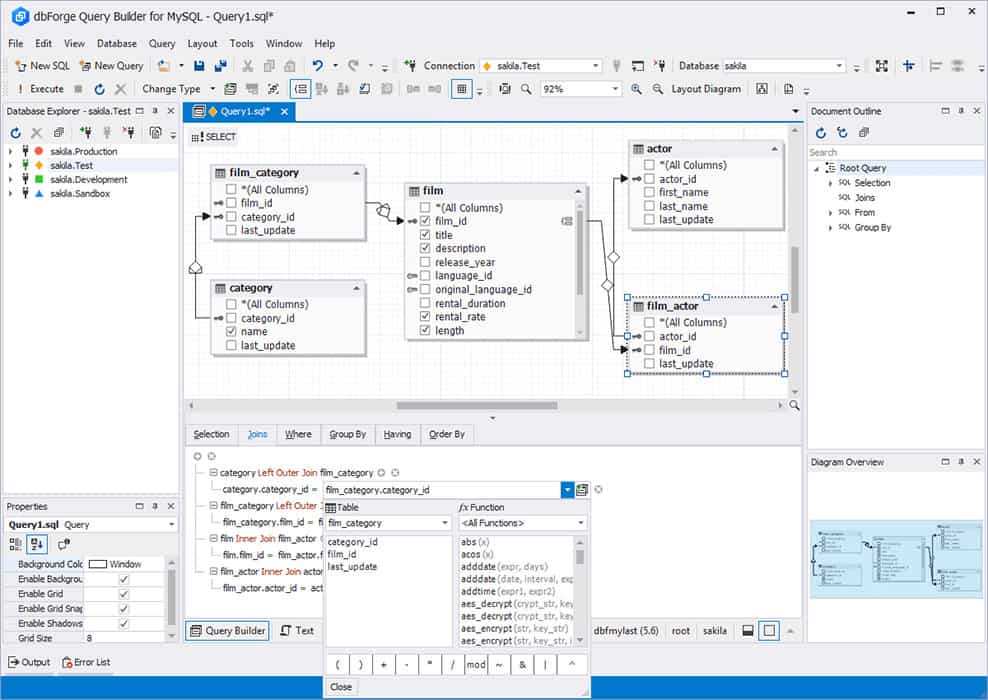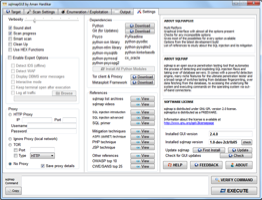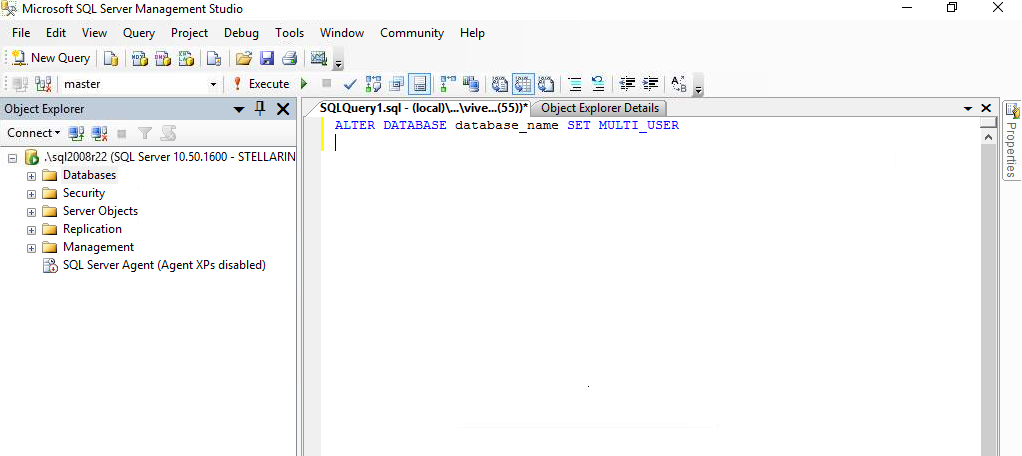

- HOW TO EXECUTE MULTIPLE SQL FILES IN SQL SERVER ON MAC HOW TO
- HOW TO EXECUTE MULTIPLE SQL FILES IN SQL SERVER ON MAC FULL
- HOW TO EXECUTE MULTIPLE SQL FILES IN SQL SERVER ON MAC PASSWORD
Of course, you can also use the asterisk ( *) to return all columns if you wish. We can see the new data file listed in addition to the original data file (and log file). Solutions_dat_2 /var/opt/mssql/data/Solutions_dat_2.ndf Solutions_log /var/opt/mssql/data/Solutions_log.ldf Solutions /var/opt/mssql/data/Solutions.mdf We can check the result by running the following query: USE Solutions Can be specified in KB, MB, GB, TB, or %. FILEGROWTH The automatic growth increment of the file (the amount of space added to the file every time new space is required). Can be specified in KB, MB, GB, TB, or UNLIMITED. MAXSIZE The maximum file size to which the file can grow. It supports MySQL, Oracle, MS SQL Server, SQLite, PostgreSQL, DB2, Sybase, SQL Anywhere, Derby / JavaDB, Firebird, Informix. the operating system’s path to the file).

HOW TO EXECUTE MULTIPLE SQL FILES IN SQL SERVER ON MAC FULL
FILENAME This is the full physical path to the file (i.e. This is the logical name used in an instance of SQL Server when referencing the file. Here’s an explanation of the various arguments used in this example: NAME Specifies the logical file name. If you use Windows, you’ll need to use backslashes ( \) instead of forward slashes ( /). Note that this example uses Linux/Mac file paths. In the popping out window, you can select multiple. Click + Add to detect all the instances on the selected computer. Click + Add Computers to detect the computers with SQL database, and select one to backup in the pop-up window. Choose SQL Server Backup in Home tab to get started.
HOW TO EXECUTE MULTIPLE SQL FILES IN SQL SERVER ON MAC HOW TO
This adds a data file with a logical name of Solutions_dat_2, and with a physical path of /var/opt/mssql/data/Solutions_dat_2.ndf (this is the physical location on the computer). How to backup multiple databases in SQL Server: Step 1. Here’s an example of adding a single data file to an existing database: USE master įILENAME = '/var/opt/mssql/data/Solutions_dat_2.ndf', This article contains examples of using T-SQL to add a data file to an existing database in SQL Server. However, you’re not restricted to just one of each file. You can add data files (and log files) to a database at a later date if required. When you create a database using the default options, one data file and one log file are created. Then go to command prompt and navigate to this folder and execute “RunMyScripts.In SQL Server, databases store their data and objects (such as tables, views, stored procedures, etc) in files. Make sure you replace server details and authentication details. bat file, for example save it as "RunMyScripts.cmd" in the same folder where your scripts are stored. At this point it should boot up SQLServer.
HOW TO EXECUTE MULTIPLE SQL FILES IN SQL SERVER ON MAC PASSWORD
SQLCMD -S Server\Instance -U Vishal -P Password -i %1Ĭopy this to notepad and save it as a. Just run the following in terminal from the directory that has your docker-compose.yml file: docker-compose up.

Also, your article doesn't discuss reusing a Command instance for multiple statements, which I thought you meant by 'execute multiple SQL statements using a single SqlCommand'. The snapshot is as follows: After pressing OK button, you will get a command prompt.

To understand the above syntax, let us open command prompt using windows+R shortcut key. You can use SQLCMD and batch programming together to execute a large number of script files easily.įOR /f %%i IN ('DIR *.Sql /B') do call :RunScript %%i That's why I have a method to split SQL statements on a semi-colon (see in this article Database Connector). To run SQL file in database, you need to use below syntax: mysql -u yourUserName -p yourDatabaseName < yourFileName.sql. ndf files at the time the database is created. Optimally for every CPU that a server has there should be a datafile (up to eight), normally these are created by adding. However, when you have large number of scripts to execute these methods may not be feasible. mdf file where it stores some basic info about itself and data that is added to tables in the database. You can open the script file in SQL Server Management Studio and execute it, or you can use SQLCMD to execute a script from command line. There are different options available when you want to execute a.


 0 kommentar(er)
0 kommentar(er)
